Multiplexer filters for the Korean Very Long Baseline Interferometer (VLBI)
Recent advances in mesh filter design and assembly technology at our production site in Cardiff now enable us to offer filters with a clear aperture diameter of up to 300mm. Twelve filters (four sets of three different designs) were delivered to the Korean Astronomy Obseratory, now known as the Korean Astronomy and Space Science Institute for their Very Large Baseline Interferometer.
The three filter specifications are as follows:
1.0cm-1 (30GHz) low pass. 231mm clear aperture
• 2.4cm-1 (70GHz) low pass. 220mm clear aperture
• 3.5cm-1 (105GHz) low pass. 150mm clear aperture
Filters under test at NPL
The three filters are used to separate the following four frequency bands:
21-23GHz42-44GHz84-88GHz127-131GHz
The minimum requirement for both low frequency transmission efficiency and high frequency reflection is 90%, with a target specification of 95%. The filters are used at fifteen to twenty degrees away from normal.
The performance of the filters was tested using:
A Hewlett Packard HP 8510 Vector Network Analyser (VNA) at The National Physical Laboratory (NPL), Hampton Rd., Teddington, Middlesex. TW110LW. Our thanks to David Gentle in the RF Free-Field Metrology for carrying out these measurements.A Martin-Puplett Polarizing spectrometer (FTS) at the School of Physics and Astronomy at Cardiff University
The photographs below show some of the filters undergoing testing on the VNA at NPL
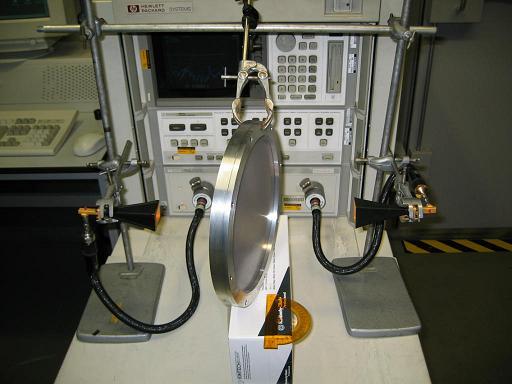
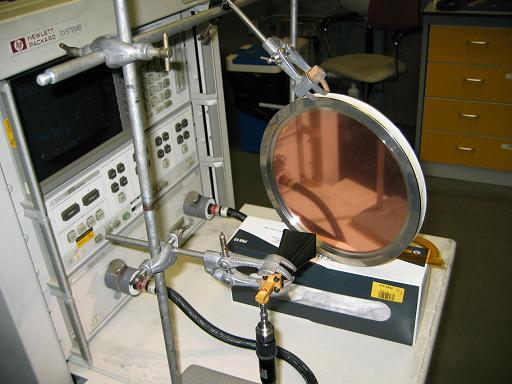
The following graph shows the measured transmission profile of the 1cm-1 LPE filters. Thick vertical lines mark the frequency bands that are to be separated. The requirement of a minimum T of 90% is certainly met and, with less noisy data, we are confident that the target of 95% has been met. Below 48GHz the Cardiff polarizing FTS is an inappropriate instrument to use because its source, an Hg arc lamp, provides very little power at these low frequencies. However extrapolation from the data measured at higher frequencies indicates an excellent agreement with theoretical predictions.
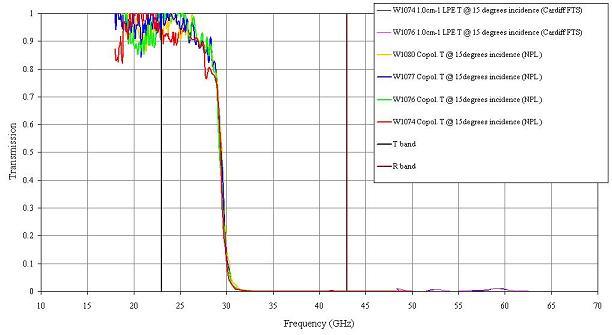
Cross polar losses for the 1cm-1 filter are below -30dB at frequencies below the transmission edge frequency (in transmission), and less than -50dB at frequencies above the edge (in reflection.)
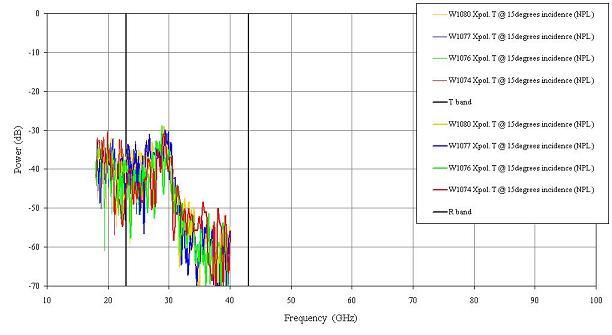
Transmission and reflection measurements carried out on the 2.4cm-1 filter are shown below. These data show that both the minimum and the target requirement for in-band average transmission efficiency are exceeded. In reflection the filters exceed the minimum requirement.
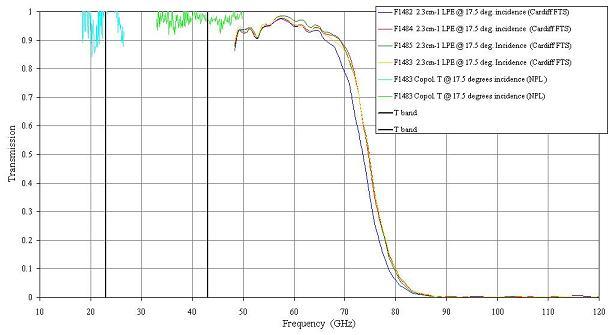
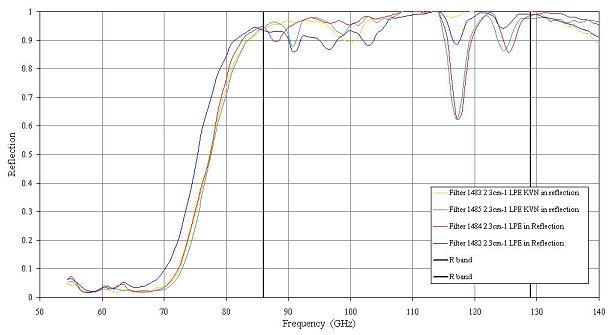
The following graphs show transmission and reflection data for the 3.5cm-1 filters. In transmission the specified requirement of 90% is exceeded, and performance is close to the target of 95%. In reflection performance exceeds the 95% target.
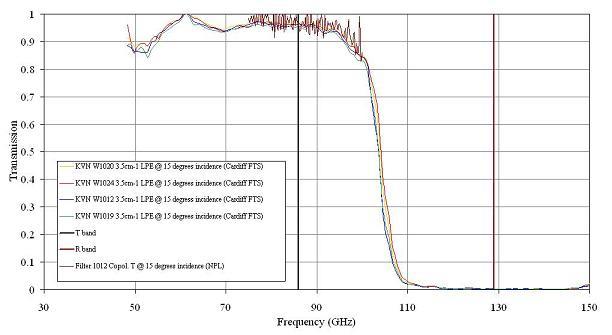
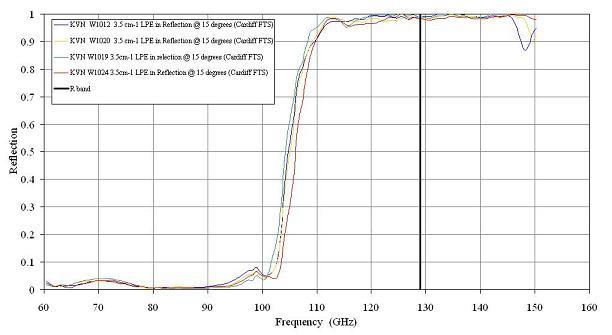
Our filter technology is remarkably versatile and covers a wide frequency range. We have low-pass filters up to 650cm-1 (20THz) and band-pass filters centred as high as 300cm-1 (10THz).
Please contact us for further information or a quotation. Our website has details of our coating technology, wideband polarisers, and wide range of cryogenic equipment and detection technology.